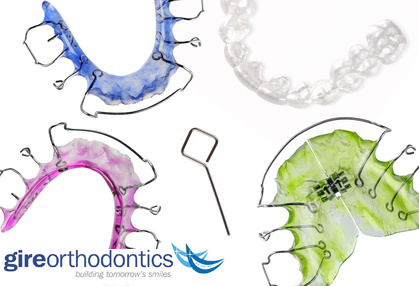
The Risk of Relapse
“It’s important that all of my orthodontic patients know and understand that if they want to maintain their new smile, treatment doesn’t end the day I take off those brackets and wires,” says La Habra and Chino Hills orthodontist, Dr. Robert Gire. “It will take some time for your teeth and surrounding tissues to get used to their new positions, so a retainer needs to be worn for some time after the braces are taken off.”
The bone and tissues surrounding your teeth will need to be trained to stay in their new positions. Because the tissues are somewhat elastic, the teeth have a tendency to relapse back to where they were prior to starting orthodontic treatment. The risk of relapse is especially high in the month immediately following having the braces removed.
Retainer Wear Time
It can actually take as much as 4-6 months for the bite to stabilize before transitioning into part-time or night-time wear. Additionally, if the teeth were severely crowded, had large gaps or spaces, or were moved a great distance, it might take even longer for the bite to stabilize.
A good rule of thumb is that you should wear your retainer full-time for at least 4-6 months, only taking it out to eat, drink, brush and floss. At Gire Orthodontics, we place a semi-permanent retainer on the inside of the lower teeth so the transition to night-time wear is either immediate or within a couple of months for the lower arch, depending on initial severity.
Retainer Treatment
“Just like your orthodontic treatment, your retainer treatment will be unique to you,” says Dr. Gire. “I’ll prescribe retainer wear that is right for you. Some patients may require continuous wear for extended periods of time while others may be able to transition into night-time wear sooner than later. I want to ensure my patients have the most functional and beautiful smiles for years to come, so I’ll craft the ideal plan to achieve that.”
Retainer Types
Just as there are different treatment times, there are also different retainer types. Most people probably think of the traditional removable retainer that is made of plastic and a wire that goes around the teeth. We use those for our Phase I treatments on younger children. On older teens and adults, we place a semi-permanent or fixed retainer to the inside of the lower teeth and fabricate clear Invisalign type retainers for both the upper and lower teeth (with the lower Invisalign type retainer fitting over the semi-permanent retainer. The semi-permanent retainer doesn’t show and one doesn’t have to worry about losing it, because it doesn’t come out. It usually lasts about 3-5 years before it may need to be checked and rebonded.
“I hear a lot of excuses for why patients don’t wear their retainers,” says Dr. Gire. “They worry they’ll interfere with their daily life, or they accidentally threw it away after eating and so forth. You name the excuse and we’ve heard it! But the truth is, after a few days, you’ll get used to the retainer and you won’t even notice it anymore. And if you keep your case with you all the time, you’ll have a safe place to put it in when eating and drinking. The reality is, if you don’t wear your retainer, your smile may not end up looking the way it did after your braces were removed.”
So to ensure success and the most beautiful smile for years to come, be sure to follow Dr. Gire’s very specific recommendations on retainer wear.

